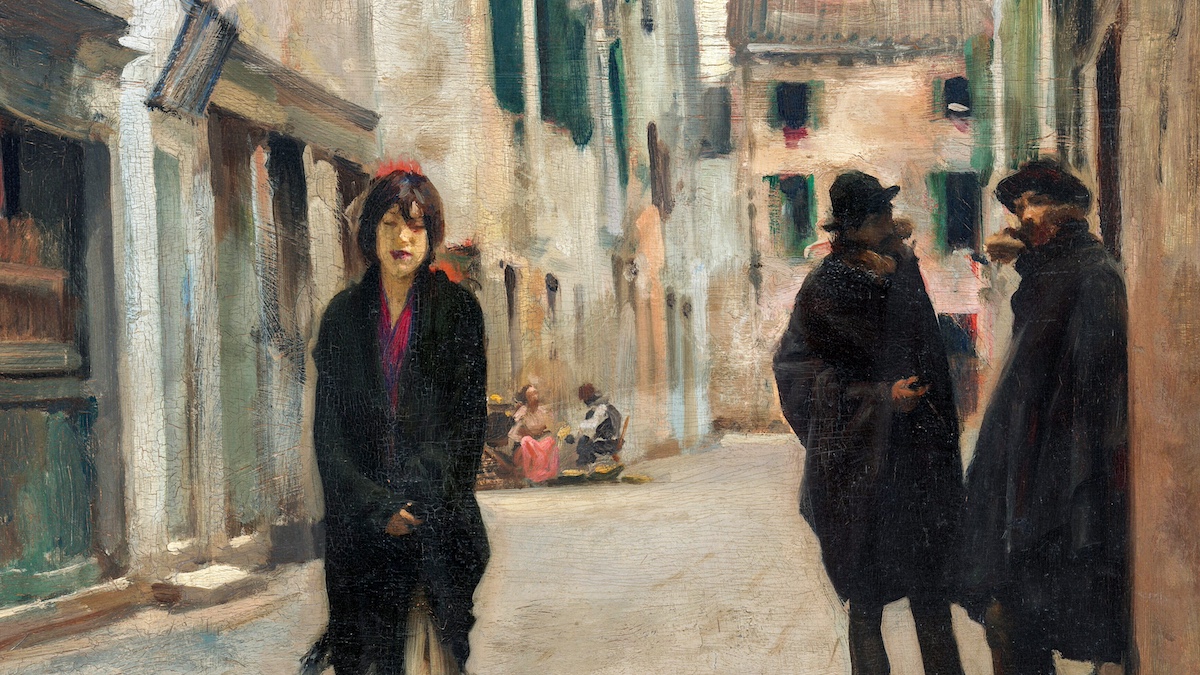“I must get the impression that my pleasure is important to her – and that she isn’t just trying to get through the appointment. The reality may be quite different, but the impression she gives me is what counts.”
These words were written by a man on a popular sex trade website here in Ireland—a website that has monopoly on the sex trade, on which men can talk to each other through anonymous forums about their shared “hobby.” On the site, men rate and review the women they pay for sex, awarding zero to five stars for her “physical attraction,” “value for money,” and “overall satisfaction.” He can also write a description of the experience. Reviewers can critique the woman’s looks and personality, report whether she has gained weight or aged visibly since her photos were taken, and complain if she doesn’t speak or make eye contact with him, keeps an eye on the clock, or otherwise makes it difficult for the poor man to really enjoy himself.
It’s strange, isn’t it, how having sex with an unwilling woman—whom you have to pay to extort sexual consent—might not make you feel great. But that’s her fault for not faking her enthusiasm well enough, right? That’s why the review system is there. The customer is always right!
Only a tiny minority of women engage in prostitution of their own free will. In most cases, on one side of this “transaction” is a female victim of circumstance, whether that be poverty, drug addiction, grooming, or sex trafficking. She is usually very young and foreign. She usually does not have freedom of choice of men who will enter her body. On the other side of the transaction is the male “punter,” who has money, freedom of choice, and autonomy in his decision making. He is usually white, middle aged, middle class, and married. He has not been coerced into paying for sex. He has freedom to choose what woman he wants, what he will do to her, how he will do it, how long it will take, what he will write about her online afterwards.
I was once one of the tiny minority of women who “chose” to sell sex. In my early twenties, I spent four years engaging in prostitution. Now, I am an author, an activist, and a psychotherapist specialising in the impact of sexual trauma. During my ten years campaigning to end the sex trade in Ireland, my country adopted the “Nordic Model.” This type of legislation, which criminalises the purchase of sex and decriminalises the sale of sex, should be adopted by countries across the globe.
Paying for sex is a sexual crime in the island of Ireland, France, Sweden, Norway, Iceland, and Canada, as it should be world-wide. It is the most sinister and insidious form of sexual abuse, as it is cloaked in the language of commerce and propped up by the media’s fantasies. The best way to combat prostitution is by adopting the Nordic model: prosecuting those who pay for sex, while offering amnesty and resources for those who find themselves selling it.
What About the Men?
We have a “sex for rent” problem in Ireland: some landlords are offering free rent to young vulnerable foreign women in exchange for weekly or bi-weekly sex. Obviously this is gross, and the country reacted with disgust when the news broke. How dare a landlord exploit a vulnerable young women like that, and prey on housing insecurity in an extremely challenging market? Our focus is very much rightly on the creep landlord for offering such a proposal. We see the woman as the victim of his exploitation.
Yet if that same woman accepts money from a man for sex because she is desperate for money to pay her rent, she is suddenly a “sex worker”: a free agent doing business in a free market. The addition of cash into the equation somehow blinds us to the power dynamics, and the men who exploit her lack of choices recede into the shadows.
We have to pick a side. Either “transactional sex” is exploitation, or it is not. What’s more, we need to shift our focus from the women selling sex to the men who pay for it.
Movies and TV shows are full of dramatic portrayals of “call girls” and “hookers.” Sometimes they’re glamorized as femme fatales types; other times, they’re portrayed as down-on-their luck addicts, the victims of their own choices. Yet somehow the men who pay for sex don’t enter into the story. Apart from Richard Gere, who played the ridiculously unbelievable white knight character in Pretty Woman, there are very few media portrayals of these men. Newspaper articles on the sex trade only focus on the women involved. The accompanying photo is usually a pair of stillettos walking along a dark, damp laneway, a car waiting in the distance. The man at the wheel doesn’t feature.
We don’t want to look at them. We don’t want to talk about them. We don’t want to know who they are. It’s much easier—and more titillating—to focus on the women, asking why they’re doing it, whether it’s work or not, if it’s feminist or not—than to look clearly at what the men are doing. The women and girls in the sex trade aren’t the only ones being groomed. We are all being groomed to see prostitution as something different than what it actually is. We are conditioned to believe that it is something women create, but this is the furthest thing from the truth. The truth is, men create prostitution, and men benefit from it.
There are over 100,000 men in Ireland who regularly pay for sex. That’s one in fifteen. (The number is much higher in countries which have legalised or decriminalised paying for sex.) By contrast, there are about 1,000 women involved in the Irish sex trade. The discrepancy of our focus is absolutely outstanding.
“Consent” Doesn’t Prevent Harm
Prostitution is paid rape. But on the standard definition of sexual consent, this goes unrecognized. The definition of ‘consent’ is to comply, to acquiesce, to assent, to give permission. Broadly speaking, it is a yes or a no. Yes, I agree to receive a medical treatment. No, I do not consent to receive spam emails.
But when we try to apply to this very basic, legal definition consent to sex, we run into problems. Sex can be consensual in this “thin” legal sense, yet still be unwanted—and seriously harmful. Without mutuality, which can only exist freely, there is only violation, whether we are aware of it or not. I wasn’t aware of it for four years. I thought it was all good, because I was “in charge.” It was only when I got out of the sex trade did the impact hit me, and continues to hit me. The nervous system absorbs unwanted sex, whether we are saying to ourselves “Yes, I want to do this,” or “it’s worth it,” or “It’ll be over in an hour,” or “I need the money.” The body knows the truth, and it holds onto it. That’s why PTSD is more common among women who have experienced prostitution than among war veterans. Yes, war veterans. This is why.
Prostitution is repeated rape, and the mind has to do gymnastics to make that experience tolerable. I know this because I did it, and I suffer the consequences every single day. I was willingly raped for four years.
We see an acknowledgment of the deficiency of the “thin” sexual consent standard in the movement of many rape groups to define consent more richly: enthusiastic, reversible, freely given, informed. None of these words accurately describe a women’s consent to sex in prostitution. Unless your kink happens to be getting paid by unknown, unattractive, narcissistic, middle-aged men, your consent is not enthusiastic. It’s also not, practically speaking, reversible, because you have been paid to have sex. That’s your job. If you try to take back your consent, the man could force you anyway, or take his money back, or hit you. In the “sex work is work” framework, this would be like me going to my therapist office and informing my client that I’m not in the mood but I’m expecting payment anyway. It’s very hard to say no when you’ve literally been paid to say yes.
Ultimately, it doesn’t matter what language we come up with or cognitive games we play. Mutuality is essential in any sexual encounter, and mutuality cannot be bought.
The Nordic Model
No law will end prostitution, just as no rape law will make rapists stop raping. But we still have rape laws. We don’t say, “well, they’re not working,” and legalize rape. We work on prevention, we teach about consent in schools, we create programs for sex offenders in prison. We do all this in addition to the law that criminalises rape.
The same must be applied to any law around prostitution. Legalisation and full decriminalization make the harmfulness of unwanted sex harder to recognize. They turn pimps into legitimate business men and buying sex into a legitimate hobby. They send the message that paying for sex is acceptable and normal. They ignore the inequalities that push women into prostitution and the misogyny of paying a woman to say yes to sex. And they encourage sex-trafficking. The Nordic Model is the only model of legislation that goes straight to the problem. Under the Nordic Model, the laws criminalize male demand. The criminals here are not the women, but the men: the men who drive the sex trade, who create the market for it, and who shove themselves inside unwilling female bodies and give their victims a star rating afterwards. Importantly, the Nordic Model does not seek to prosecute the victim of circumstance, coercion, or sex trafficking.
Such laws reflect the inherent inequalities present in prostitution. Legislation based upon the Nordic Model stipulates that exit resources and supports must be made available to women. Such laws help create a social stigma around paying for sex by recognizing that men are doing something very wrong and by saying “no” to one of the oldest systems of misogyny. Of course, it takes time to implement new laws and for culture to change. But I’m not interested in band aids. We shouldn’t waste time pruning a rotten tree when the thing needs to be dug out and thrown away.
If the goal is a misogyny-free society—no sexually objectifying women, no publicly rating their sexual prowess and breast size, no stars out of five, no entitled men paying to gratify themselves, no sex trafficking, no abuse—the only answer is the Nordic Model. And, after implementation, we must continually assess and improve our laws to make sure they best serve the vulnerable women they aim to protect. Our focus should not be on the tiny minority of “sex workers” who are happy, healthy, middle-class, educated, white women earning thousands every week. They have the resources to get another job. Instead, we need to protect the silent majority: the most vulnerable, with the fewest options; the abused, the abandoned, and the invisible.
Prostitution—paid rape—doesn’t exist because of poverty or drug addiction. It exists because men create the market for it. The Nordic Model justly recognizes and responds to this reality.



